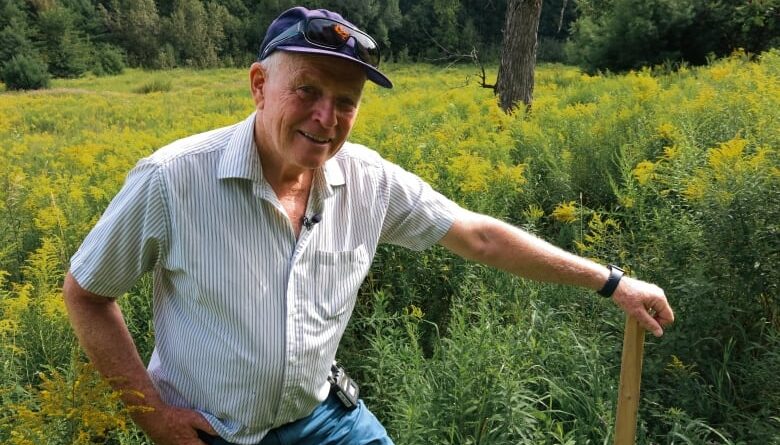Endangered butternut trees thriving in Wakefield Forest | CBC News
Hardy seedlings of an endangered tree species are doing well in their first season in a western Quebec forest, according to the conservation group that planted them.
Butternut trees are native to Canada and can be found in Ontario, Quebec and New Brunswick. But in the last 30 years or so, cancer has killed 80 percent of them, said Stephen Woodley, president of Action Chelsea for Environmental Protection (ACRE).
“In that area, it’s been killing butternuts. That’s why it’s endangered,” said Woodley, who helped plant their first batch of seedlings in May at the Hundred Acre Wood in Wakefield, Que.
“We got 30 nature conservation volunteers to help us plant these trees, and we told them they were their children for the summer. So they’ve been coming out to water them whenever dry.”
According to Woodley, the young trees are in good shape now.

Long recovery process
One of ACRE’s sources for disease-resistant trees was the Forest Gene Conservation Association (FGCA), one of the many groups that have been working to restore the butternut population.
The group has been working for two decades to create fungus-tolerant orchards, said executive director Kerry McLaven.
Once a healthy butternut tree is found, its branches can be grafted onto walnut trees, McClaven said. After that, they are cared for in the warehouse before being planted and managed in the orchard.
However, the work doesn’t stop there: FGCA is now looking after hybrids to produce scab-resistant seedlings, which are grown as seedlings and replanted in places like the Hundred Acre Wood.
McLaven says that over the years he has been working with the organization, the role of political, environmental and community work has changed.
“[It’s] partly because of COVID, but also…
That growing interest has encouraged them to “do more, get more seeds, get them out there and start reproducing,” he said.
While the disease is found across Ontario, McLaven says there are also “other factors” that have reduced butternut numbers.
“Some of it has to do with land and development where these types of trees will continue,” he said. “Therefore, all these factors together make this tree species an endangered species.”
The lack of protection worries some advocates
According to Tony Morris, manager of conservation policy and campaigns with Ontario Nature, there is more to be done at the federal level to protect the species.
“You can’t really get a brand back [when] you’re allowing liberties to destroy their habitat,” Morris said.
Morris cited the fact that butternut is one of the species in Ontario that a developer can cut down or remove as long as they pay into the fund.
The measure — which was called “pay-to-kill” by Ontario Green Party Leader Mike Schreiner when it was introduced in 2019 — was quickly opposed by environmental groups. It was later approved in 2021.
“The risk of this fund is not tied to the species involved and there is no need for the fund to be used to pay where the risk occurs,” said Morris.
At the time, the province said the butternut was at risk because of cancer, and if producers had to plant more it would not help the species to recover.
As for ACRE, it plans to plant 20 more butternut trees in Wakefield this fall — along with other native and endangered plants.
#Endangered #butternut #trees #thriving #Wakefield #Forest #CBC #News
